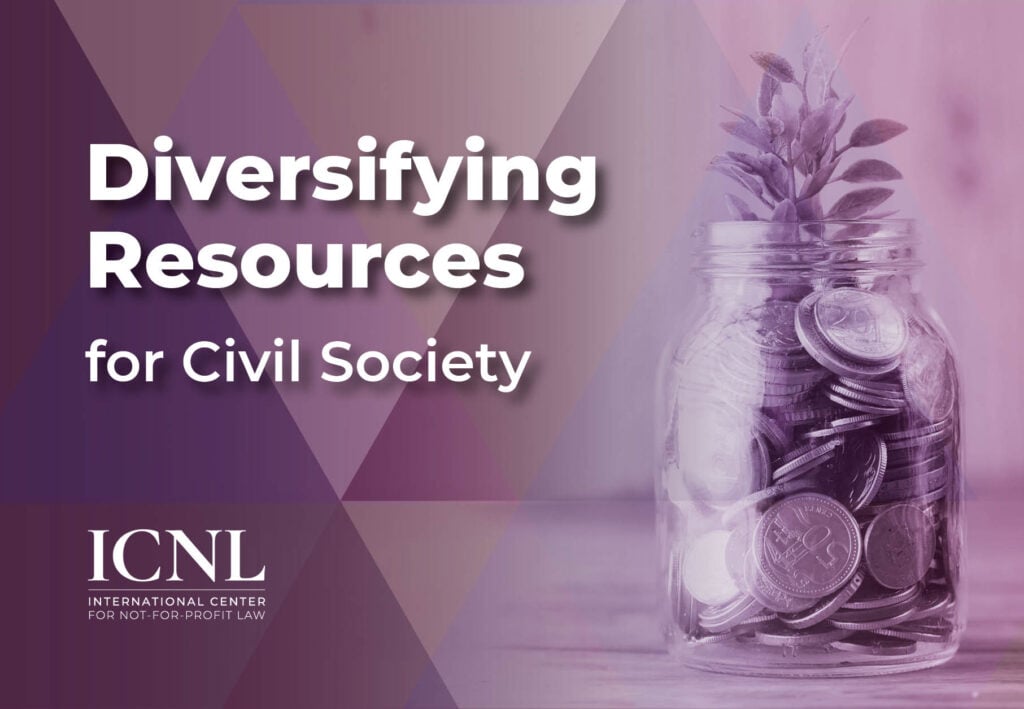Forging Ahead: Key Outcomes from the Africa Consultation on Development Assistance
Published: June 2025
On March 6, 2025, ICNL’s Africa regional program convened an online consultation with our civil society partners under the theme “Forging Ahead in a Fragile Development Assistance Environment.” Around 50 participants from 17 countries discussed the impact of ongoing international development assistance cuts on civil society programs and identified innovative ways to ensure the sector’s sustainability in the face of reduced support. Participants included lawyers’ networks, human rights defenders’ coalitions, activists, and digital rights specialists.
1. Understanding the Impact of Measures Reducing International
Development Assistance
Through an interactive discussion and polling, participants highlighted the immediate effects of funding cuts on their operations, and how national governments have responded.

Operational Effects
Ninety-two percent of participants are affected by recent measures to cut foreign assistance. While the majority of participants described the impact of the measures as moderate, the effects – regardless of severity – touch on diverse aspects of their operations
- Program Disruptions: Most participants reported a negative impact on their programming either due to reduced funding of specific programs, or general operational budget reductions.
- Limitations to Co-Implementation: Even among less affected civil society organizations (CSOs), participants cited severe impacts on partnership building as organizations focus on survival. This is limiting implementation and halting or delaying collaborative projects.
- Reduced Sectoral Solidarity: As funding shrinks, participants reported that increased competition for funds is resulting in reduced solidarity within the sector.
- Reprisals: Some participants reported reprisals, ranging from being requested by government actors in Nigeria to reveal wide ranging organizational financial information (although the committee later reversed the request), to stigmatization in print and social media, as seen in Zimbabwe.
- Impact on Social Services: Across the continent, affected organizations have halted the provision of essential services and humanitarian support. In Tanzania, this has affected most health, education, and media services. Participants from Ghana, Kenya, Mozambique, and Uganda reported similar concerns.
Government Responses
Governments have responded both positively and negatively to the developments.
- Increased Assistance to the NPO Sector: Some governments have strengthened engagement with the civil society sector to mitigate the impact of the funding crisis. In Botswana and Nigeria, the government has stepped up to offer stopgap measures and assistance to affected CSOs, specifically targeting critical health services. In Tanzania, the Registrar of NGOs convened a meeting with the sector to discuss the impact of cuts on CSOs and consider a support strategy. In Ghana, the Ministry of Finance allocated funds to support health service programs in vulnerable communities.
- Suspending Operations & Services: In Kenya, Mozambique, Nigeria, Tanzania and Uganda, participants reported that government services, especially healthcare, have been suspended or halted. In Kenya, cuts to USAID funding halted a key program through which civil society and the government were partnering to promote enabling implementation of the PBO Act.
- Reallocation of Budgets: In Ghana, Mozambique, Tanzania and Uganda, participants reported government commitments to cover the costs of the services affected by the suspensions, particularly in the health sector. This raised fears that any federal and local government funding that was allocated to civil society would be diverted.
- Repressive Action: Across the continent, participants reported fears that this crisis would prompt a clampdown on the sector. Most notably in Nigeria, government has employed the US Administration’s narrative accusing USAID of funding terrorism, leading the National Assembly to launch a parliamentary investigation into the work of NGOs in Nigeria.
When consulted on likely impacts that partners would face if other international development partners implement similar measures, the picture becomes starker. While partners supported by private foundations reported that they would be able to continue their operations and not suffer immediate negative impact, most organizations revealed their heavy reliance on foreign government assistance. Responses that partners would have to put in place in such a scenario ranged from downsizing the organization’s staff and offices (where they work in more than one location) to cutting specific programs, and even winding up of organizations. There was consensus that such a situation would severely limit the ability of civil society to perform its oversight role, provide services to communities, and work on governance, civic space and rule of law.
2. Short-term Responses to the Measures
Partners shared some immediate steps that they have taken to respond to the funding cuts. These include reducing operational costs and coordinating donor engagement. Some country examples include:
KENYA: Some affected organizations have taken the immediate step of sharing office space with peer organizations or hosting smaller organizations to alleviate the financial pressure of rentals. CSOs have reallocated program budgets, reducing consultant and subgrant costs in favor of using their own personnel to undertake research and advocacy at a lower cost.
TANZANIA: The sector has taken advantage of the developments to encourage further localization through the formation of a National Reference Group. This group will assess funding opportunities, coordinate engagement with donors to advise on appropriate ways to channel aid, and engage in efforts to increase funding through local philanthropy, investment, and economic activities.
ZAMBIA: Organizations are exploring good practices outside the continent, such as South Korea’s initiative dedicating 2% of the national budget to civil society, to support their advocacy with the Zambian government. As part of their strategy, CSOs are identifying existing national budget allocations that the government is not using efficiently for possible reallocation to support civil society work.
3. Innovative Long-Term Responses
ICNL and participants considered several innovative longer-term financial and non-financial models that CSOs might implement to diversify their funding, increase operational efficiency and value-for-money, and generally strengthen their sustainability. More information on the models discussed is included below, and draws in part from the research already undertaken by ICNL partners, including the West Africa Civil Society Institute.
Financial Models
PRIVATE SECTOR PARTNERSHIPS: Working with the private sector can provide more flexible funding to plug gaps left by cancelled project funds. This model is highly dependent on the legal framework for philanthropy, the health of the local economy, and firms’ appetite to support particular types of work.
SOCIAL ENTERPRISE: Organizations may engage with for-profit endeavors seeking environmental or social impact. Social enterprise often promises unrestricted funds, though such support is often service-oriented with a humanitarian or climate focus.
PROFIT-MAKING ACTIVITIES: In some contexts, organizations can maintain tax exempt status when these activities relate to and advance the public benefit purposes of the organizations. Highly dependent on the requirements for tax-exempt status.
FISCAL SPONSORSHIP: In this model, one CSO provides administrative services to others while assuming the legal and financial responsibility for the collective. This lowers cost, transfers skills, provides tax deductions, and increases fundraising opportunities, as the collective shares the administrative burden.
CROWDFUNDING & DIGITAL FUNDRAISING: Opportunities to raise capital through social media and digital fundraising platforms are more accessible than ever, though questions remain about the model’s accessibility and applicable regulation and safeguards.
MICROFINANCE: Through small loans, financial services, and microcredit, NGOs can engage in microfinance operations to sustain projects. Microfinance will increase the number of active contributors and offer unrestricted funding, making it a strong option for continuing operations with low income.
ENDOWMENTS: By maintaining an endowment, an organization allows investors and donors to contribute assets, including stocks and real estate, to a fund to generate income supporting long-term operations.
LOCAL PHILANTHROPY & COMMUNITY GIVING: Organizations may appeal to local donors and their communities by demonstrating localized impact for activities. Local donors and the community may be reached through local outreach and social media.
GREEN BONDS & SOCIAL BONDS: Use of proceeds bonds, such as green bonds and social bonds, are growing in popularity, and they may provide a useful source of financing for organizations working towards specific environmental or social goals. The use of these bonds requires disclosure and reporting on the use of proceeds.
MEMBERSHIP FEES: For some organizations, the collection of membership fees may be a viable model for generating income from project activities.
Non-Financial strategies
MERGERS: In legal frameworks where it is possible, some NPOs might consider merging with other likeminded organizations to reduce costs and share administrative burdens.
SPACE-SHARING: In cases where a formal merger is not viable or desirable, NPOs may consider other cost sharing measures such as sharing an office space with other organizations to share financial and administrative costs.
SHARED EXPERTISE: Increasing knowledge, skill, and best practice sharing between organizations can help increase solidarity across the sector, improving the effectiveness of programs, legal advocacy, and fundraising.
NEW PARTNERSHIPS & COLLABORATIONS: Seeking out newer, more diverse partnerships, transnational networks, and collaborative events will also increase solidarity, provide an avenue for shared expertise, and enable a more flexible response to the development assistance context.
4. A Roadmap Towards Sustainability
The consultation highlighted opportunities for participants to take a more strategic approach to their mid- to long-term sustainability. Models that participants wish to explore further include the following:
- Social Enterprise- Interested Partners: Ethiopia, Mozambique and South Africa.
- Private Sector Partnerships- Interested Partners: Ethiopia, South Africa, Tanzania, Uganda, Zambia and Zimbabwe.
- Fiscal Sponsorship- Interested Partners: Kenya, South Africa and Zambia.
- Digital Fundraising- Interested Partners: All attendees
- Endowments- Interested Partners: Cote d’Ivoire, South Africa and Tanzania.
- Local Philanthropy- Interested Partners: Kenya, South Africa, Tanzania and Zambia.
ICNL is working with partners interested in exploring a multi-pronged approach to assist with their implementation of improved sustainability frameworks.
Sign up for our newsletters
Sign up